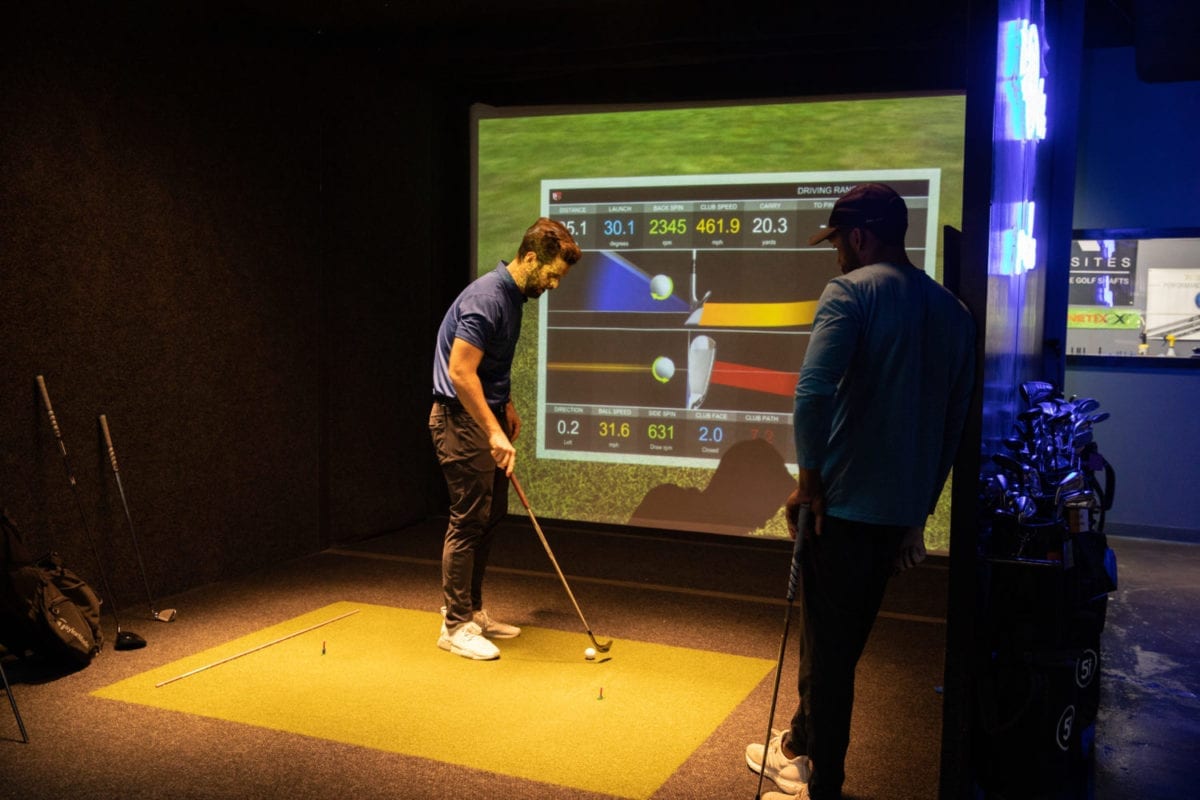Dan McCracken – NYC
Some golfers slice, some golfers hook, and others may push or pull the ball. Some golfers may even suffer from all four of those directional misses. Regardless of what your miss is, all golfers miss their target at times. The first step to correcting these misses is understanding why they happened. To find these answers, it’s best to get yourself in a simulator and start charting your club face and club path numbers. These data points tell the story of why your ball flew where it did, so let’s dig in.
Perhaps the best place to start is with this fact that you are not going to hit the ball perfectly straight consistently. Almost every golf ball struck will have some degree of curvature to it, certainly some more than others. So with that said, I believe the best players own their curvature so that they can consistently shape their golf ball towards their intended target.
The data point I like to look at first is the club face angle. Where the club face is pointing at the moment of impact is the primary controller of the ball’s starting direction. So if your club face is open you’ll almost always push the ball, and if it’s closed you’ll almost always pull the ball. Regardless of what you do, it’s only a bad thing if it curves away from your target (or a better way to phrase it for the more advanced player, over-curving your target). When it comes to which way your ball is curving, we now need to take a look at club path.
The club path angle refers to the direction the club head is moving at the moment of impact. Golfers tend to swing either inside-out or outside-in. For a right handed golfer, inside-out would mean swinging more to the right which would generally create a hook or draw bias. Golfers who fade or slice the ball generally swing outside-in, for the right handed golfer this is swinging more to the left. So to figure out how to curve the ball the way we want to, we need to look at the relationship between club face and club path.
The ball flights I generally like to help create with most students would be push-draws or pull-fades. So if your ball is going to curve to the left, I want it to start to the right and vice versa. The relationship I like to see is about a 2:,1 path to face. So if your path is 4 degrees inside-out, I want your club face 2 degrees open. Same goes for the other side of the spectrum. The bigger that match-up gets, say 10 inside-out and 5 open, the more curvature you’ll see, but it should still end up pretty close to your target. To be able to apply your natural ball flight to as many situations as possible, I usually like to see less curvature than more.
There are many variables that go into changing your club face and club path. You can look at grip, club face alignment, body alignments, ball position, dynamic posture, pressure shift in the feet, take away, hand path, arm structure and many more things. If you find yourself lost or overwhelmed, that’s what our 5i Golf Pro’s are here for. However if you choose to walk the road alone, remember that face angle controls starting direction. If your path is left of the face angle, the ball will curve right and vice versa. This knowledge is the starting point to make real change in your ball flight.





